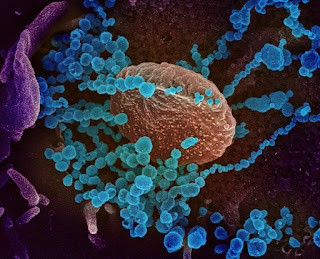 SARS-CoV2 has a feature that is common with SARS-Cov and MERS.
SARS-CoV2 has a feature that is common with SARS-Cov and MERS.
The majority of people who catch this bug don’t infect anyone else. Most of the transmission is done by a small number of people, potentially fewer than 20% of those who become infected. These people, who inadvertently are responsible for spreading the virus are termed "Super Spreaders"
Now a lot of epidemiologists don’t like the term "Super spreader". They prefer to talk about super spreading events. But, this is something who knows a bit about epi's will accept - they talk in terms of events more than people. In any case, the fact remains, a minority of people are responsible for a majority of cases.
In 2020, Dillon C. Adam, a visiting research fellow at the University of Hong Kong and Ben Cowling, a professor of infectious diseases epidemiology at the same university, co-wrote an opinion piece in the New York Times on the phenomenon, arguing that if authorities focused on preventing the types of activities that allow super spreading to occur — crowded events, sharing close spaces with others — more onerous measures wouldn’t be needed. Now Prof. Cowling wonders if there is a way to figure out the types of people who are more likely to be super spreaders.
It’s the question that weighs on Vineet Menachery’s , a coronavirus expert at the University of Texas Medical Branch, mind, too. “If we can decipher what makes a person a super spreader, it can change the dynamics of outbreaks and how we deal with them, now and in the future,”
What makes a few feel this could lead to a wild goose chase is that there aren’t obvious clues to pursue.
We know the virus that comes from super spreaders is not different in terms of its genetic sequence. We know there is no link with disease severity. And , there is no evidence for age, sex, or co-morbidity in the spread.
But - and this is a good but, these clues are not obvious yet. I believe that last set of lines should end with the words "so far". We have barely studied the data from the pandemic so far. Patterns and clues of some kind will emerge.
Also, these are not the only markers or clinical demographics so to speak.
References:
Just Stop the Superspreading
https://www.nytimes.com/2020/06/02/opinion/coronavirus-superspreaders.html
COVID-19, SARS and MERS: are they closely related?
https://www.ncbi.nlm.nih.gov/pmc/articles/PMC7176926/
Hong Kong Quarantines a Few to Spare the Many. The Few Aren’t Happy.
https://www.nytimes.com/2021/03/17/world/asia/hong-kong-coronavirus-quarantine.html
How SARS-CoV-2 first adapted in humans
https://science.sciencemag.org/content/372/6541/466
Clues to COVID-19 coronavirus's vulnerability emerge from an antibody against SARS
https://www.sciencedaily.com/releases/2020/04/200403103959.htm
No comments:
Post a Comment